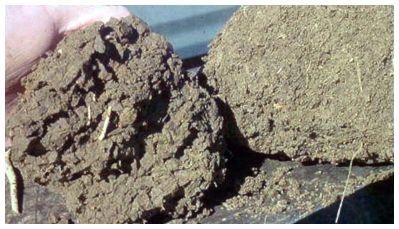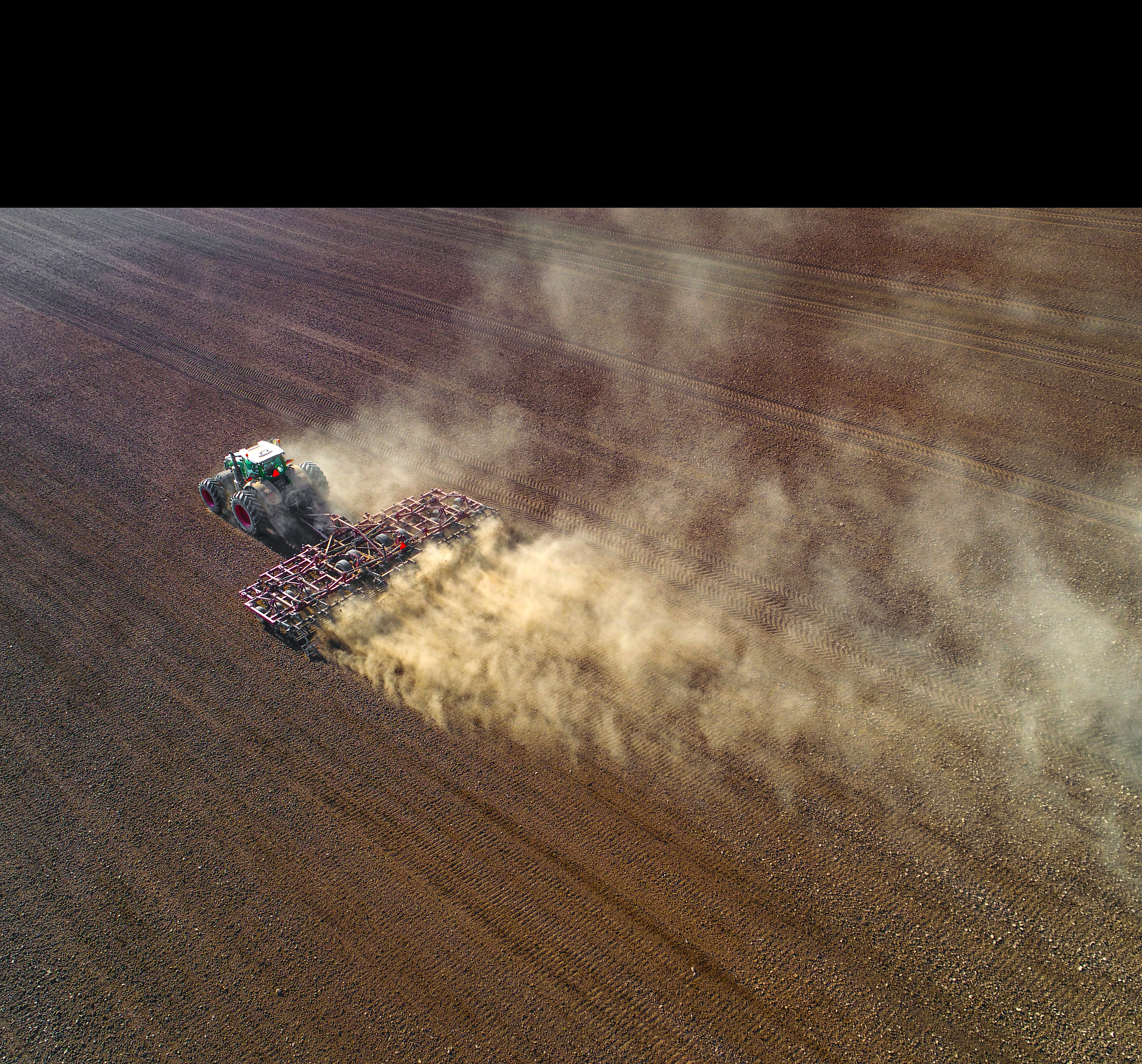
Soil is much more than the individual particles of sand, silt, and clay. Ideally, the soil should be one-half solid materials (sand, silt, clay, nutrients, minerals, organic materials, and biological life) and one-half pore space (half of that containing water and the other half being air space). Biological life and organic matter provide the "glues" to create soil aggregates, forming soil structure.
A healthy soil is one with good aggregation, where stable pores extend from the soil surface to deep into the profile. These pores allow water infiltration, root penetration, and air exchange to occur. The sample on the left was taken from a field no-tilled for more than 10 years. The one on the right is from a continuously tilled field with the same soil type.
While tillage has been used for crop production, it does destroy soil structure, breaks up the soil pores, and reduces the amount of residue on the soil surface. If the soil structure was bad, e.g., compaction, this may be desirable as tillage can break up the compacted soil and create some new pores. However, if the soil structure was already favorable for crop growth, the tillage operation will break up the existing soil structure and make it more susceptible to compaction by reducing the soil’s strength. Without soil structure, future operations may compact the soil by squeezing out the pore spaces between the soil aggregates.

